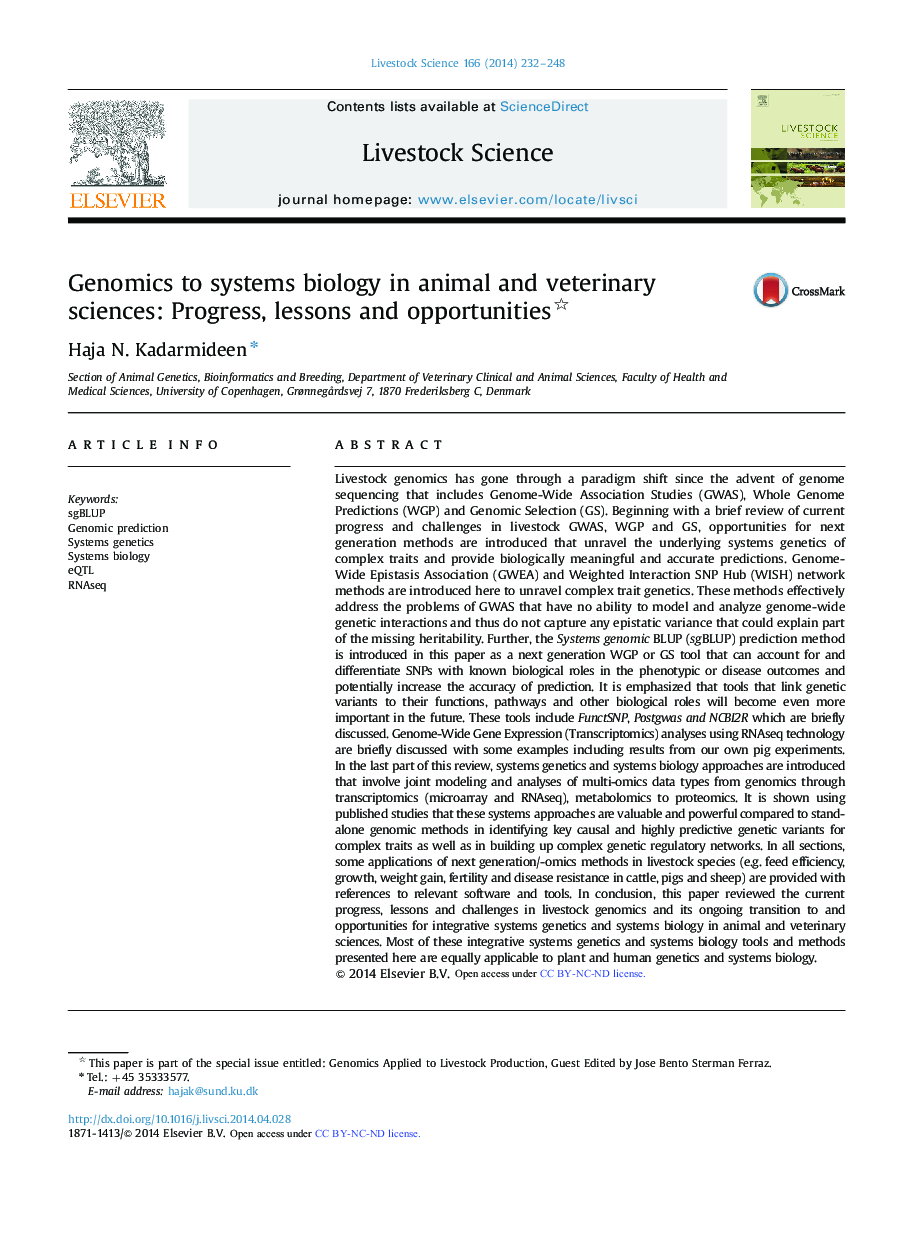| Article ID | Journal | Published Year | Pages | File Type |
|---|---|---|---|---|
| 5790148 | Livestock Science | 2014 | 17 Pages |
â¢Current state, progress and challenges of genomics methods applied to animal complex traits.â¢Next generation genomics: GWEA, WISH network and sgBLUP methods to unravel complex traits.â¢Multi-omics experiments and data integration for study of systems biology of complex traits.â¢Systems genetics of feed efficiency, diseases, obesity and growth in pigs, sheep and cattle.
Livestock genomics has gone through a paradigm shift since the advent of genome sequencing that includes Genome-Wide Association Studies (GWAS), Whole Genome Predictions (WGP) and Genomic Selection (GS). Beginning with a brief review of current progress and challenges in livestock GWAS, WGP and GS, opportunities for next generation methods are introduced that unravel the underlying systems genetics of complex traits and provide biologically meaningful and accurate predictions. Genome-Wide Epistasis Association (GWEA) and Weighted Interaction SNP Hub (WISH) network methods are introduced here to unravel complex trait genetics. These methods effectively address the problems of GWAS that have no ability to model and analyze genome-wide genetic interactions and thus do not capture any epistatic variance that could explain part of the missing heritability. Further, the Systems genomic BLUP (sgBLUP) prediction method is introduced in this paper as a next generation WGP or GS tool that can account for and differentiate SNPs with known biological roles in the phenotypic or disease outcomes and potentially increase the accuracy of prediction. It is emphasized that tools that link genetic variants to their functions, pathways and other biological roles will become even more important in the future. These tools include FunctSNP, Postgwas and NCBI2R which are briefly discussed. Genome-Wide Gene Expression (Transcriptomics) analyses using RNAseq technology are briefly discussed with some examples including results from our own pig experiments. In the last part of this review, systems genetics and systems biology approaches are introduced that involve joint modeling and analyses of multi-omics data types from genomics through transcriptomics (microarray and RNAseq), metabolomics to proteomics. It is shown using published studies that these systems approaches are valuable and powerful compared to stand-alone genomic methods in identifying key causal and highly predictive genetic variants for complex traits as well as in building up complex genetic regulatory networks. In all sections, some applications of next generation/-omics methods in livestock species (e.g. feed efficiency, growth, weight gain, fertility and disease resistance in cattle, pigs and sheep) are provided with references to relevant software and tools. In conclusion, this paper reviewed the current progress, lessons and challenges in livestock genomics and its ongoing transition to and opportunities for integrative systems genetics and systems biology in animal and veterinary sciences. Most of these integrative systems genetics and systems biology tools and methods presented here are equally applicable to plant and human genetics and systems biology.
